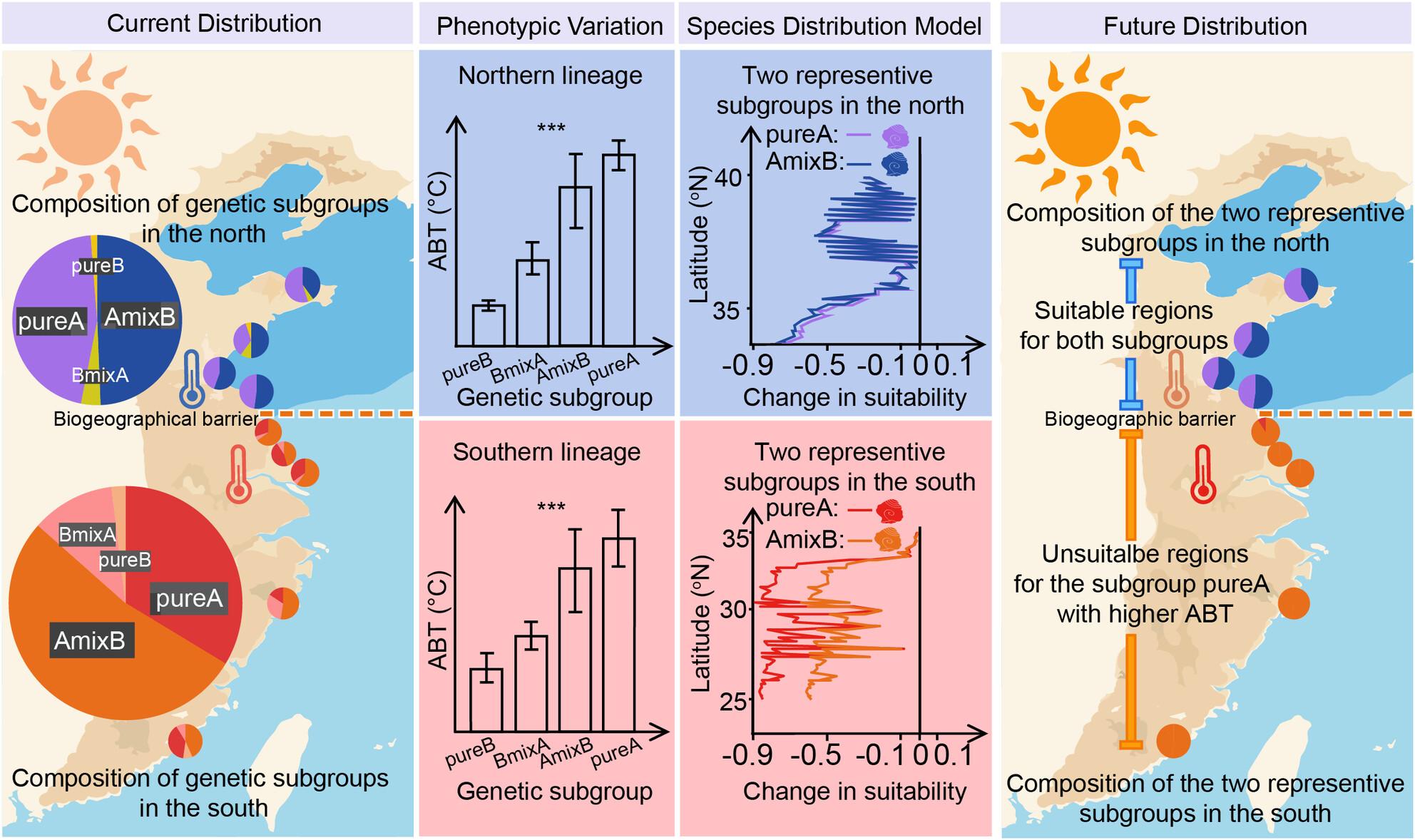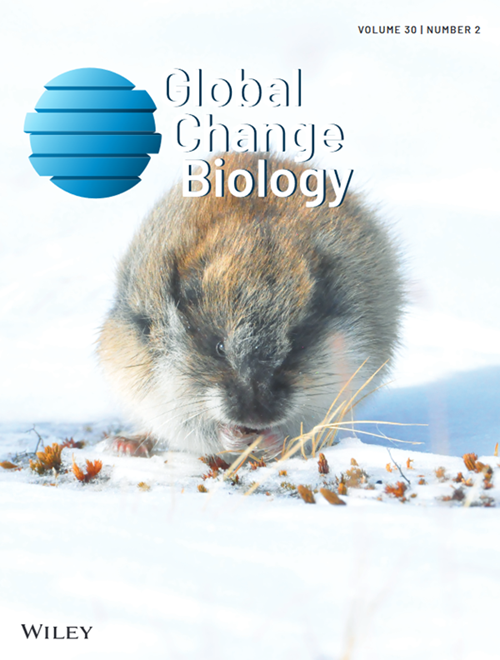Genomics-Informed Range Predictions Under Global Warming Reveal Reduced Adaptive Diversity Whilst Buffering Range Shifts for a Marine Snail
Abstract
Understanding the genetic basis of local adaptation in thermal performance is useful for predicting species distribution shifts under anthropogenic climate change. Many species are distributed across multiple biogeographic regions, and the uniquely adapted populations in each region may respond to future ocean warming with distinct distribution changes. In the present study, we investigated phylogeographic patterns, thermal sensitivity, and genetic differentiation in the intertidal snail Littorina brevicula along China's coast. Whole-genome sequencing results based on a newly assembled chromosome-level genome revealed two genetic lineages, with a north–south divergence that is linked to the thermal environment. Within each lineage, individuals could be further subdivided into genetic subgroups that differ at key genomic loci underpinning differences in upper heat tolerance. Heat stress drives adaptive divergence across multiple levels of organization, from the individual to the biogeographic level. Taking into account genetic diversity associated with variation in heat tolerance, a physiological species distribution model (pSDM) was applied to predict the distributions of the different genetic subgroups in response to climate change. Both northern and southern lineages were predicted to experience declines in habitat suitability under a 4°C future warming scenario, and that a genotypic subset of snails from the southern lineage may even be driven to extinction. These findings illustrate that even when a species' range is maintained, it can nonetheless experience a significant decrease in adaptive diversity as a result of climate change. The integrated approach presented here, which considered both physiological and adaptive genetic variation at the level of individuals within a biogeographical context, provided new insights into how marine species can respond to global warming.


 求助内容:
求助内容: 应助结果提醒方式:
应助结果提醒方式:


